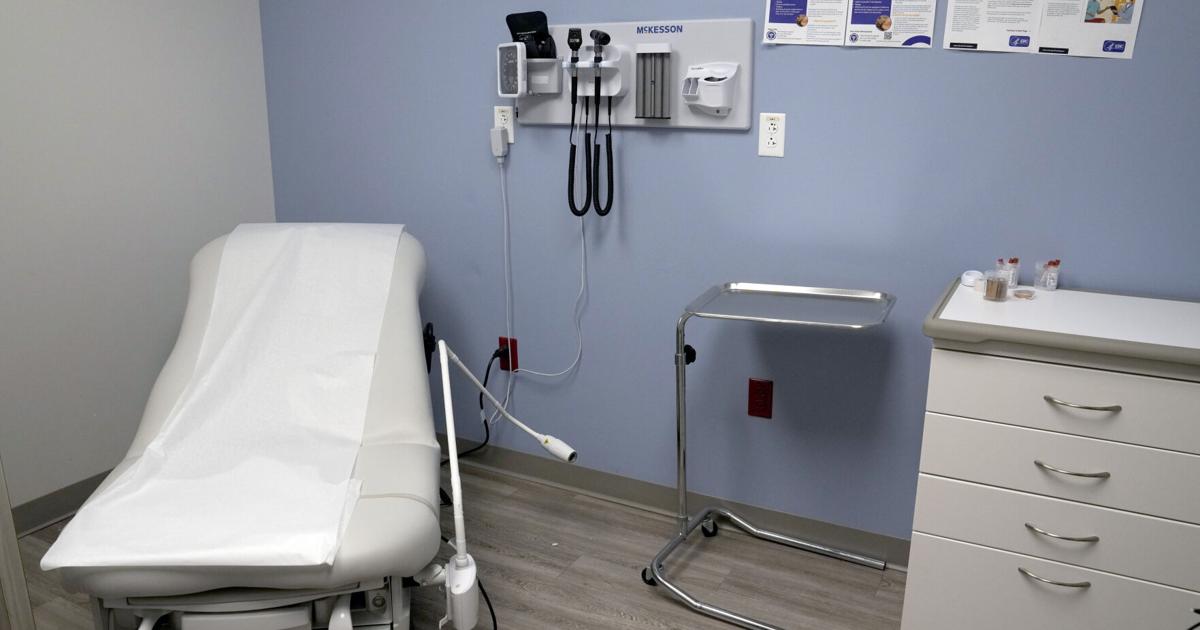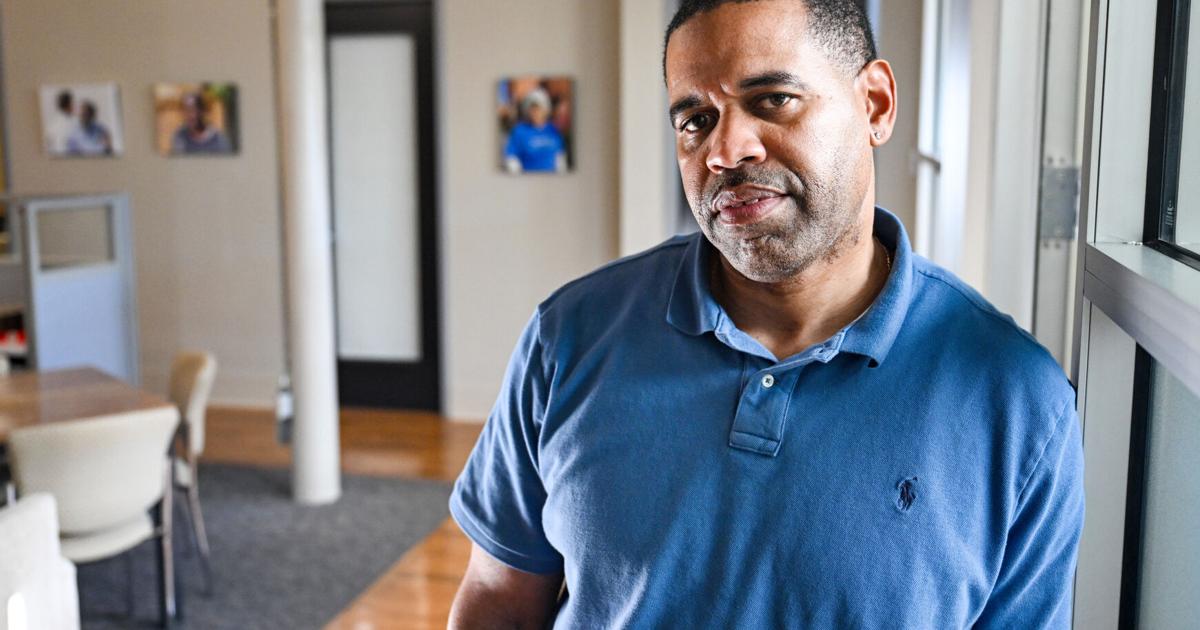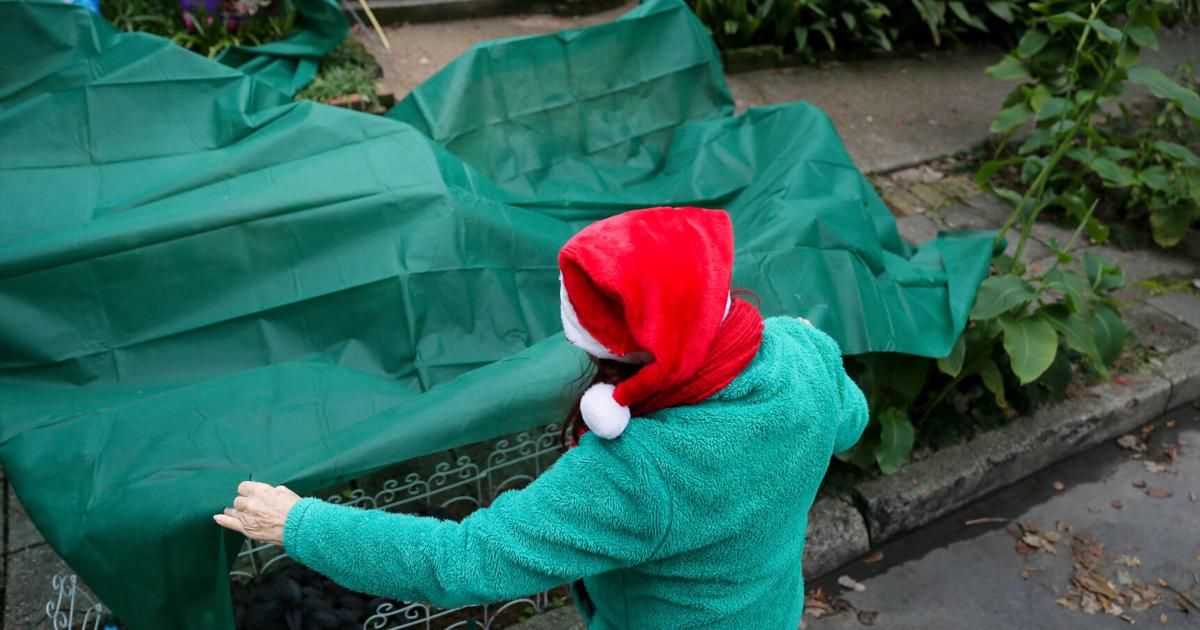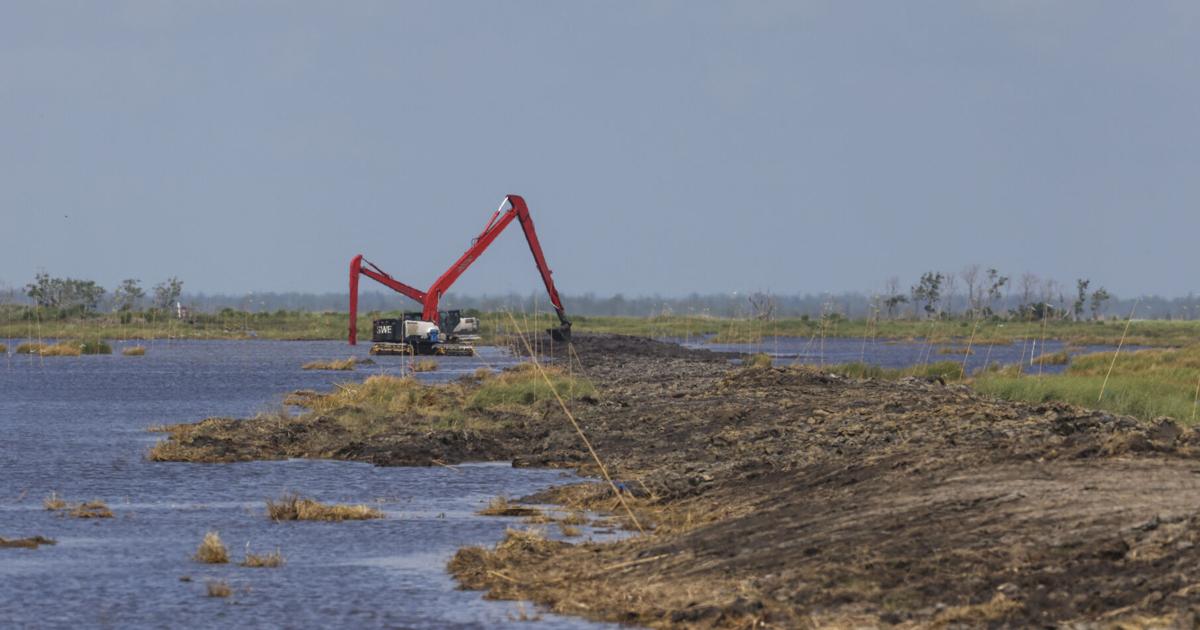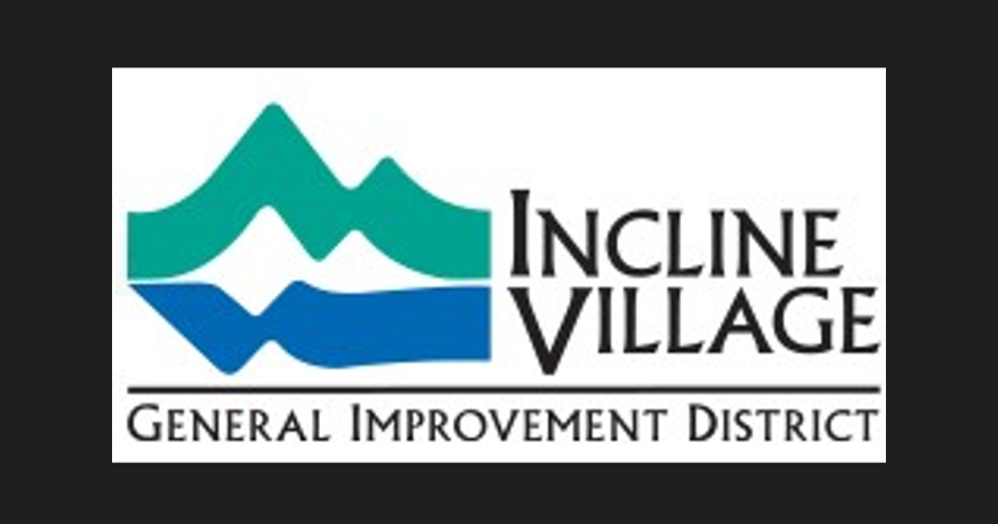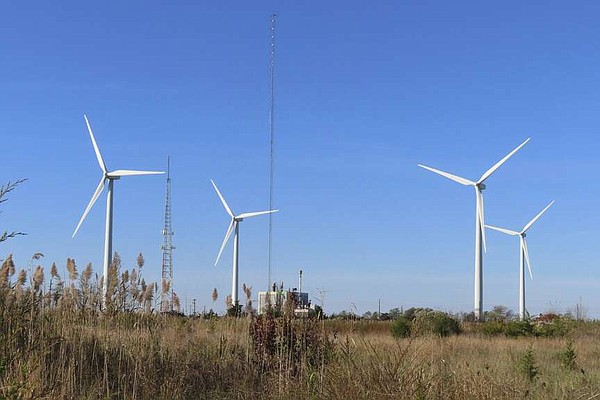Louisiana
New Orleans saltwater battle could be far pricier than it has to be. Leaky pipes are to blame.

New Orleans’ decades-long struggle with leaking water mains has emerged as a major reason why the city’s potential battle against saltwater intrusion could be more than five times what Jefferson Parish expects to spend.
While the city’s population is 47,000 less than its upriver neighboring parish, New Orleans must produce 162 million gallons a day of freshwater for its residents and businesses, compared to only about 70 million gallons for Jefferson.
The difference is largely water leaking from hundreds of locations throughout the Sewerage & Water Board’s 1,600-mile system of water mains and distribution lines. While both New Orleans and Jefferson Parish have significant water demand by businesses, including hotels, it’s leakage that makes the city’s water demand significantly greater.
Because of the huge difference in water usage, New Orleans’ response to the saltwater threat, should it be needed, could run as high as an estimated $270 million. Jefferson Parish’s is expected to cost as much as $45 million. Both plans include pipelines, but Jefferson’s are much smaller.
A school bus that was headed to pick up children got stuck in a deep pothole at the corner of Adams St. and St. Charles Ave. in New Orleans, Monday, May 9, 2022. The Sewerage & Water Board has a long-term plan to replace much of the 800 miles of water lines in the city that are more than 80 years old. (Staff Photo by David Grunfeld, NOLA.com | The Times-Picayune | The New Orleans Advocate)
The most recent detailed audit of S&WB water losses, published in 2019, concluded that 55.3% of all water produced in 2017 in New Orleans’ Carrollton and Algiers water treatment plants were categorized as “total real losses” — leaks. In comparison, a Jefferson Parish spokesperson said its total leakage losses were most recently estimated at only 23%.
“When you have a distribution system that is about 1,600 miles of pipes, and 800 miles of those are 80 years old or older, then you know you must have a plan” to restore the older parts of the system, said S&WB Executive Director Ghassan Korban. “This crisis – the salt water – brings to light the need to be more proactive and to think long term, beyond the interim or temporary fixes we need for this crisis.”
The same 2019 study that provided actual water loss estimates also produced another metric used by the American Water Works Association to measure long-term repair efforts of water systems in the U.S. and around the world.
It’s called an “infrastructure leak index,” and it attempts to capture both the amount of water lost and the underlying causes of those losses – broken pipes, main connections, pumps, and other issues – to create an apples-to-apples metric that is comparable with other water systems.
That metric had actually dropped to 36.9 in 2017, compared to 46.6 in 2009, an indicator that in the aftermath of Hurricane Katrina, the city had made some progress in reducing water use.

This graphic shows when various parts of the New Orleans Sewerage & Water Board’s water distribution system were originally installed. Much of the system is more than 80 years old.
But according to the AWWA’s scoring system, any score greater than 8 is unacceptable: “Although operational and financial considerations may allow a long-term infrastructure leakage index greater than 8.0, such a level of leakage is not an effective use of water as a resource.”
The city and S&WB have been working in fits and starts to speed up the repair process, including by demanding that FEMA and other federal agencies refocus post-Katrina and other post-storm restoration funds on a combined program aimed at rebuilding hundreds of miles of city streets and the water and sewer lines beneath them, in a series of combined projects.
The SWB also is in the midst of a long-term project to install so-called electronic “smart meters” to better measure water use at homes and businesses, both to get a better measure of water used, and to help end complaints of improper billing resulting from broken meters or meter readers using estimates when existing meters can’t be read.

Crews repair roads and underground utilities on Lemans and Beaucaire streets in Village De L’Est in New Orleans East on Friday, July 6, 2018, part of a $3.6 million project included in a $2.4 billion Federal Emergency Management Agency program to repair streets and infrastructure damaged during Hurricane Katrina in 2005. (Staff photo by Matthew Hinton)
A 2015 “Joint Infrastructure Recovery Response Program” settlement agreement between city agencies and FEMA resulted in about $2.4 billion being set aside for reconstruction projects.
The program has so far resulted in the replacement of 45.3 miles of water mains, with another 42.6 miles under construction, and includes plans to replace another 108.2 miles of pipelines before the program’s funding expires.
But many of the projects have experienced delays in the last few years, resulting from both the COVID pandemic and from related supply shortages and inflation issues. The FEMA funding was supposed to expire in February of this year, long before all the money is spent, and city and S&WB officials have asked that it be extended until at least May 30, 2025.
If approved, construction projects put out to bid by that time could be completed through 2027, an S&WB spokesperson said.

This chart shows that present Sewerage & Water Board rates are not enough to pay for future capital improvements, including replacement of old, leaking water mains and distribution lines.
A look at the S&WB’s long-term capital improvements budget, covering fiscal years 2022 through 2031, indicates the agency actually spent $245.25 million on water projects – mostly pipe replacements – in 2022, with funding coming from FEMA and other federal agencies, and from the S&WB and city.
The agency expected to spend another $132.55 million in fiscal year 2023 on water line replacement projects. The long-term budget lists $452.9 million total for its 10 years, based on known funding sources, but Korban said the agency also is looking for other revenue resources to fill in the outlying years.
By the time the FEMA settlement expires, he said, “we want to have an alternative source of funding, or we cannot execute our capital improvement plan, meaning continuing the same pace of replacing water mains.”
He said the city’s recovery period after Katrina, which significantly damaged the water system, also slowed the replacement of older pipes that weren’t damaged then, but are now being added to the failure column.
“It wasn’t until maybe a dozen years ago that we started actual replacement of these Katrina-damaged water mains, and in that waiting time, other water mains have gotten into worse condition,” he said. “Today, we are in a worse situation because we’re all 15 to 20 years older and the water mains are now 80 to 100 years old.”

This slide shows how a proposed 3% to 6% water rate increase would affect residential customers. The increase was proposed at a Sewerage & Water Board meeting in October 2022, but has not yet been presented to the City Council. (Sewerage & Water Board)
Last October, the S&WB proposed increasing water fees by 3% to 6% to help raise an additional $160 million a year for long-term capital projects. Korban said a portion of that money would be used to replace between 30 and 50 miles of older pipes a year.
It would be the first time water fees had been raised since 2012.
But the proposal immediately met criticism from residents and the City Council, in part caused by S&WB’s struggles to deal with its notoriously unreliable billing practices, and neighborhood complaints about how long it took to complete many of the street repair projects.
In a Feb. 28 report to Korban, New Orleans Inspector General Edward Michel pointed out that the agency still had more than $150 million in uncollected customer billings on its books, associated with 50,000 accounts. Half of those accounts were inactive, and their bills had been turned over to collection agencies.
He also cited the repeated complaints from customers about high or faulty bills, and service shutoffs.
“The OIG does not take a position on whether rate increases will ultimately be needed to cover the cost of capital projects,” Michel wrote. “However, in the interest of fiscal responsibility to the public, the OIG recommends SWBNO delay any request for a rate increase until the utility has made every attempt to recover monies validly owed to it.”
Korban said the S&WB already has been successfully reducing the amount of bad debts on its books, pointing to recent financial updates showing it has already cleared $10 million of the unpaid bills, and said finding additional funds for the water line replacement program remains a top priority.
“We haven’t been able to make a case to the decisionmakers (in favor of the fee increase) at this point,” he said. “We’re hoping that would change in the near future and we’re allowed to have a public dialog about the need for funding, and how we can keep the pace that we have enjoyed under the JIRR project.”

Louisiana
7 Coolest Towns in Louisiana for a Summer Vacation in 2024
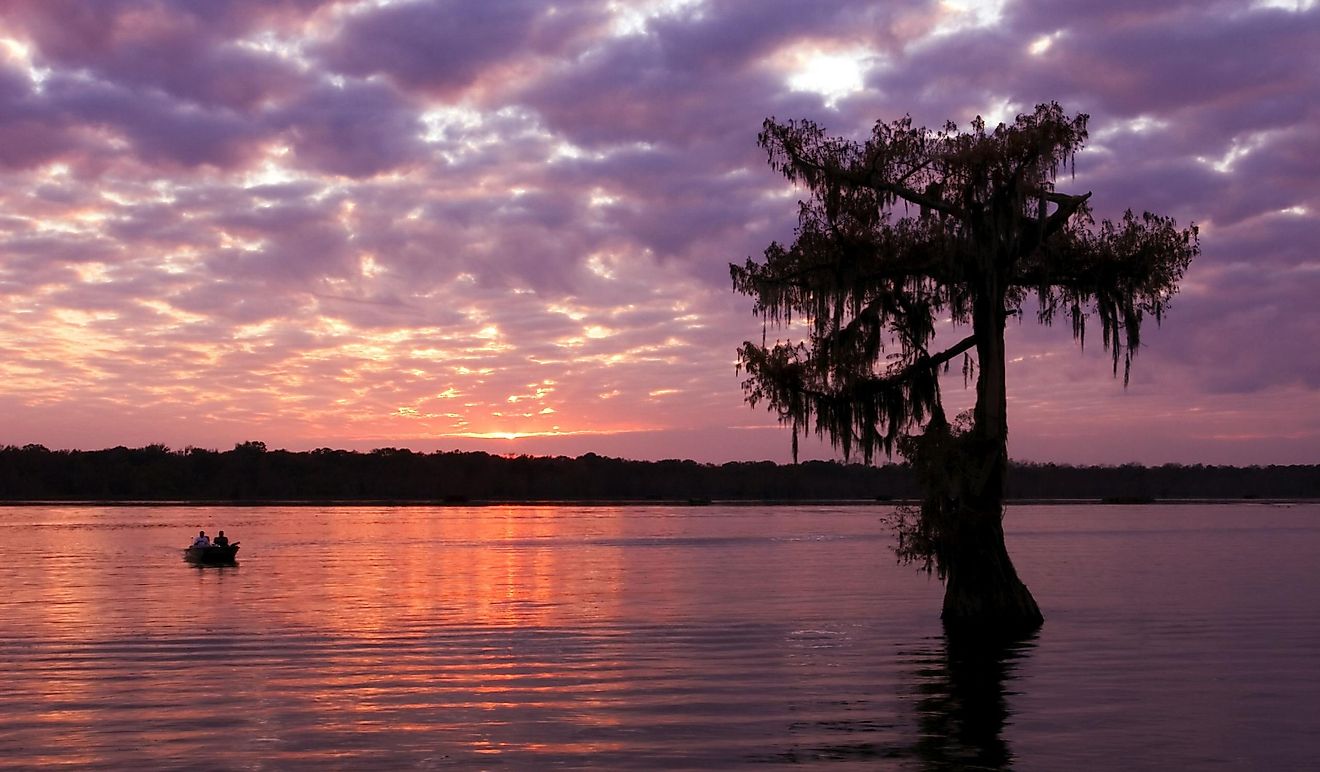
There’s no doubt Louisiana is an exciting travel destination for vacationers in 2024. The “Bayou State” is a cultural melting pot featuring a fascinating blend of French, Spanish, African, and Caribbean influences that can be seen in its traditions, languages, and celebrations. While the majority of tourists will venture to places like New Orleans with its popular Mardi Gras to experience this unique facet of Louisiana culture, there is an alternative for those looking to try something new.
Spread across the state are many smaller communities that offer much the same in terms of Southern hospitality and excitement as the bigger cities but without the crowds. Whether you’re looking to explore the state’s culinary and music scenes or even its equally compelling natural beauty, this selection of the seven coolest towns in Louisiana for a summer vacation in 2024 is a must-read.
Grand Isle
Beautiful Grand Isle is an ideal spot for those seeking a summer beach vacation. Situated on Louisiana’s only inhabited barrier island on the Gulf of Mexico, it’s home to Grand Isle State Park with its family-friendly public beach and safe swimming. The park also includes a fishing pier providing excellent opportunities for catching fish without needing a boat. Campsites are available, too, allowing stays right by the beach. For birdwatchers and nature lovers, the Grand Isle Birding Trail is a must-visit. The island is a vital stopover for migratory birds, and the trail provides a chance to see numerous species in their natural habitat, especially during the spring migration.
Another notable spot is the Grand Isle Butterfly Dome. Located within the community center, this enclosed garden is home to many native species and offers a unique chance for a close-up look at these beautiful creatures. The Grand Isle Tarpon Rodeo is a great time to visit. The oldest fishing tournament in the United States, this year’s event takes place from July 25 – 27, 2024, and promises to attract anglers from across the country for its festive atmosphere and superlative fishing.
Natchitoches
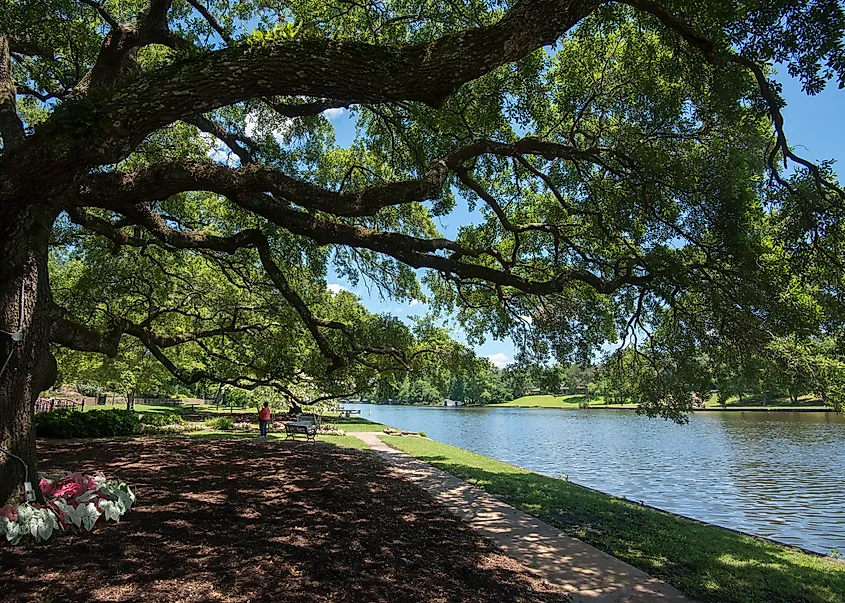
The town of Natchitoches is a great summer vacation spot for history buffs. Located on the I-49 76 miles south of Shreveport, Natchitoches was established in 1714 and is the oldest permanent settlement in the Louisiana Purchase territory. A highlight of a stay here is exploring the Natchitoches Historic District. Stretching along the banks of the Cane River, it features 33 blocks of charming shops and quaint B&Bs set in beautifully preserved French Creole architecture. Iconic brick-paved Front Street is a delight to wander and is lined with boutiques and restaurants that offer a taste of Southern cuisine.
Be sure to also spend time visiting Cane River Creole National Historical Park. This historic park includes two former French Creole cotton plantations, Oakland and Magnolia, both offering guided tours. Another must-visit is the Natchitoches National Fish Hatchery, one of the oldest in the U.S.
Mandeville

Fancy a pretty lakeside setting for that summer vacation? Charming Mandeville might be just the ticket. Located on the north shore of Lake Pontchartrain, Mandeville boasts a picturesque lakefront area that’s ideal for a pleasant stroll, while magnificent sunsets can be enjoyed at Sunset Point Park. The Mandeville Trailhead and Cultural Interpretive Center is a must-visit and provides plenty of useful information about the town’s cultural offerings and history.
Summer events are plentiful here and include music and culinary events, many set against the backdrop of the pretty downtown area. Round things off with a fun cruise, and if you feel like exploring the south end of the lake, take a boat ride to New Orleans.
Abbeville
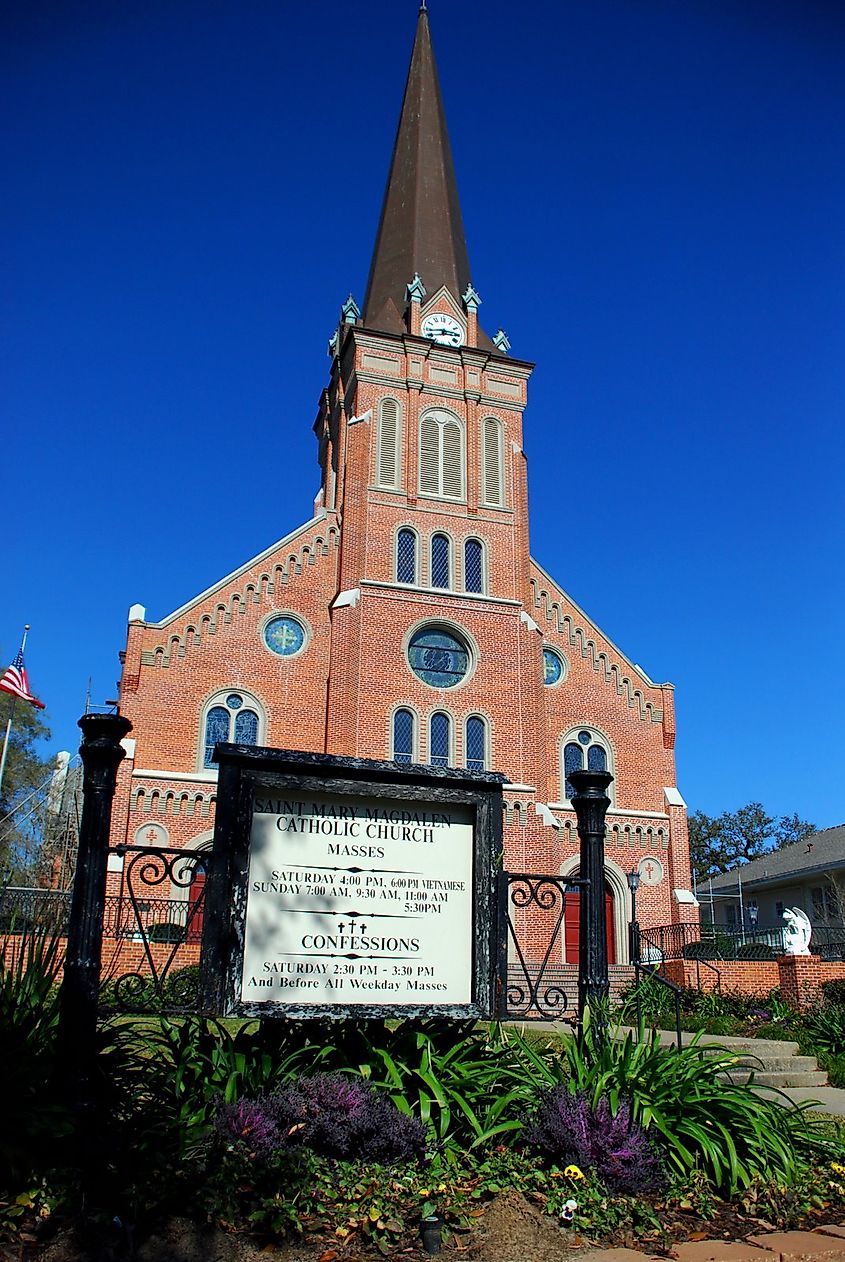
Abbeville is just a short drive south of Lafayette and is a good choice for a summer vacation in 2024. This cool small town, with its attractive antebellum and Victorian-era architecture, is deeply rooted in Cajun and Creole traditions, making it a great spot for an authentic Southern experience. The Abbeville Cultural and Historical Museum is a great place to learn more about the town’s fascinating history and also houses a great art gallery showcasing the works of talented regional artists.
The town’s food scene is one of the coolest in the state, especially for those with a hankering for mouth-watering seafood dishes like the famous Abbeville seafood gumbo, a delicious blend of local flavors and spices. Fresh crawfish boils are plentiful and offer a taste of traditional Cajun boudin, a delicious rice and pork sausage that’s available at many local eateries.
Eunice
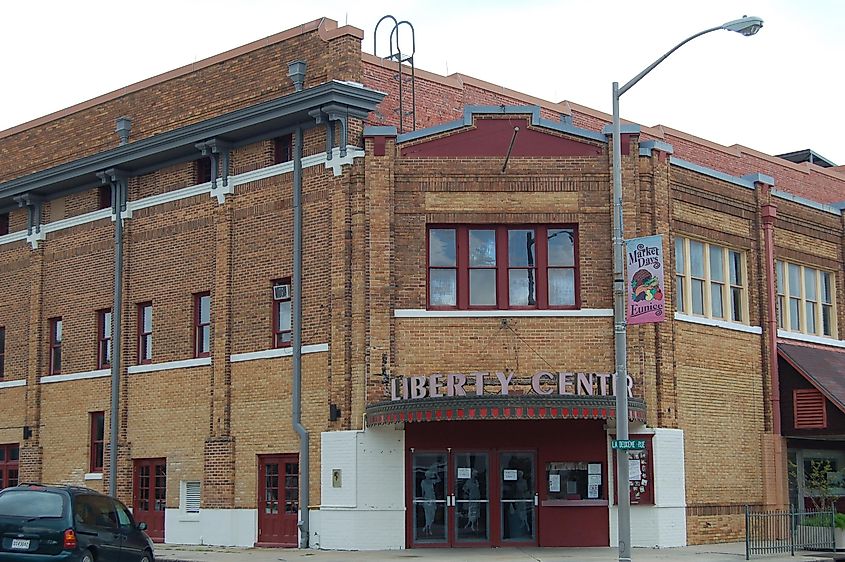
Referred to as the “Heart of Cajun Country,” Eunice celebrates its rich heritage with a variety of cultural attractions and events that offer an authentic taste of Louisiana’s unique culture through music, food, and history. Top things to do in Eunice include taking in a show at the Liberty Theater. Built in 1924, this historic venue is home to Rendez-vous des Cajuns, a live radio show performed in the style of Nashville’s Grand Olde Opry but with Cajun music and French-speaking hosts.
The Prairie Acadian Cultural Center, part of the Jean Lafitte National Historical Park and Preserve is another key sightseeing spot and provides educational exhibits and workshops about the life and culture of the Acadian and Creole people. On weekends throughout the summer it hosts traditional craft demonstrations and music performances of Cajun and Zydeco music.
St. Francisville
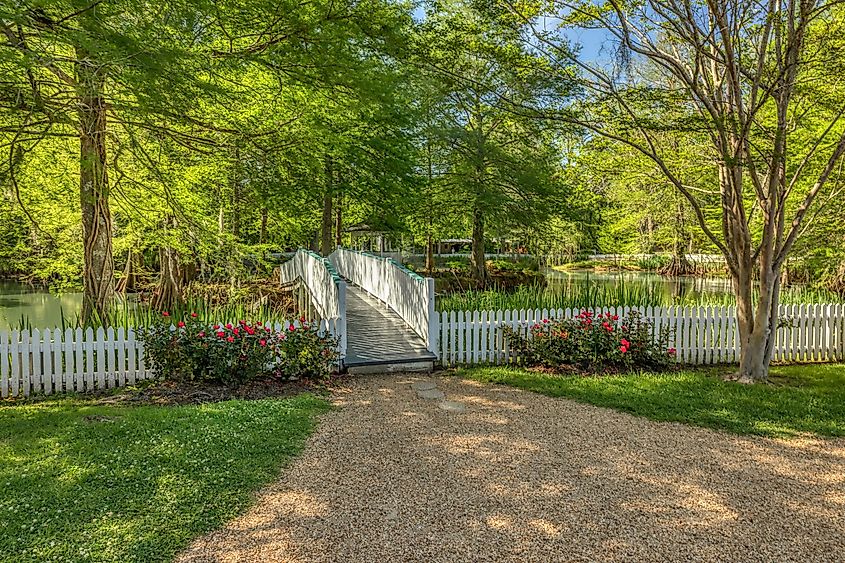
St. Francisville is the perfect place for a summer vacation on the Mississippi River. Just a 36-minute drive from Baton Rouge (a plus that makes a side trip to the state capital easy) the town owes its stunning setting not only to its well-preserved antebellum architecture and historic downtown but also to its position along the bluffs of the Mississippi. Among the most historic attractions to visit here are the Myrtles Plantation, one of America’s most haunted homes (guided ghost tours are available), and the Rosedown Plantation, set on 371 acres with a garden.
No summer vacation is complete here without spending time exploring the Tunica Hills Wildlife Management Area. It’s perfect for hiking, birdwatching, and enjoying the local flora and fauna.
Breaux Bridge

Located just a few miles east of Lafayette, Breaux Bridge is an ideal spot for a summer vacation for those looking for an authentic Louisiana food experience. Dubbed the “Crawfish Capital of the World,” this charming small town is a hub of Cajun culture and gastronomy. Although held in May, those able to start their vacation a little early will want to attend the 2024 Breaux Bridge Crawfish Festival to participate in everything from crawfish races and cook-offs to traditional Cajun and Zydeco music performances.
Whatever part of summer you arrive, there are plenty of other fun things to do in Breaux Bridge. Topping most lists is venturing onto the Bayou Teche, a 125-mile-long waterway that runs through the town that’s perfect for kayaking and fishing.
When it comes to planning unique summer getaways, the towns of Louisiana are worth considering. Not only do they offer an enchanting mix of culture and history, but they also present opportunities to sample authentic Southern experiences without the crowds…and often without the big ticket prices. Whether it’s exploring beaches and ancient waterways, enjoying local delicacies, or participating in historic festivals, these 7 cool towns in Louisiana are perfect for a summer vacation in 2024.
Louisiana
Parents want school superintendent removed for holding classes in severe weather • Louisiana Illuminator

LAKE CHARLES – The school superintendent for Calcasieu Parish is facing calls for his resignation after he chose not to cancel classes April 10, when three tornados hit the area.
Shannon Lafargue defended his decision in a video statement, saying he kept schools open based on the information available to him and prioritized safety.
However, many community members are angry the superintendent did not cancel school, saying he put students, teachers and staff at risk. Bus drivers are particularly upset, as they were forced to drive through dangerous conditions, including flooded streets and winds of more than 25 mph. Bus routes were further impacted six days later when more than 30 drivers decided not to report to work in protest.
Emails the Illuminator obtained show Lafargue was aware the National Weather Service modified its risk forecast for severe storms April 10 to level 4 out of 5 as early as the morning of April 9. The worst of the weather struck between 4 a.m. and 10 a.m.
The National Weather Service confirmed three separate tornadoes touched down in the Lake Charles area on the morning of April 10. They included an EF-2 tornado with winds up to 115 mph near McNeese State University, and two EF-1 twisters in Cameron Parish.
At the April 16 Calcasieu Parish School Board meeting, District 11 representative Phylis Ayo asked for a formal investigation of how the school superintendent handled the April 10 weather event to determine where the breakdown in communication occurred.
“Something went down, and we don’t know what it is. A formal investigation needs to happen sooner rather than later,” Ayo said.
A unanimous board vote was needed to add an item to the meeting’s agenda for the proposed investigation. District 8 Representative Eric Tarver said he would not support the motion, drawing boos from the standing-room-only audience. Board members Billy Breaux, Glenda Gay and Dean Roberts also voted against the agenda change.
At a special board meeting April 30, Lafargue recommended school board members approve a delayed school start protocol for future weather events. Bus drivers also got the opportunity to air their grievances, with many saying Lafargue owed them an apology.
Bus driver Sharon Welcome said school district officials have previously failed to prioritize the safety of bus drivers, students and teachers during severe weather.
“It’s not the first time. It’s not the fourth or the fifth time that something like this has happened. Enough is enough,” Welcome said. “I’m not going to jeopardize myself for your negligence.”
“The buck stops with you, bus drivers,” Kathy Landry, district representative for the Louisiana School Bus Operators Association, told drivers in the audience. “As your rep, anytime you don’t feel it’s safe to drive that bus, you don’t have to, and the federal government will back us on that one.”
Corey Arvie said he had seven students on board when the severe weather struck April 10. The conditions left them stuck in the middle of the road, less than 2 miles away from the tornado that struck Ryan Street. Arvie said his bus was facing toward the wind, and he worried about tree limbs crashing through his windshield.
“Today marks 20 days that I’ve dealt with trauma, crying out of nowhere, trying to earn the trust of parents again to be their bus driver,” Arvie said. “It’s hard getting up every morning knowing that these parents are trusting us with their kids’ lives, and any wrong turn, any little mistake can cost a life. It’s hard for us to keep going right now.”
Arvie said bus drivers should be represented on the school board and among school district leadership.
“I really do feel like … there should be a bus driver, either on the crisis team, in an office, because no one knows what we go through on a day-to-day basis.”
Teri Johnson, a Southwest Louisiana Federation of Teachers and School Employees representative, asked Lafargue to apologize to those in the audience.
“I haven’t earned your trust. I’m going to do something about it tonight,” Lafargue responded. “It may be too late, but at least from this point forward, no matter what happens to me, our district is going to be better … You voiced your opinion. I said in that video, that didn’t resonate with you, that this will never happen again. You are the most valuable people … I take full responsibility, and everything that goes with that is an apology.”
The school board approved a delayed start policy that would go into effect when severe weather threatens, allowing school to begin as late as 10 a.m.
According to District 10 School Board member Tony O’Banion, the board has received evaluation forms that would decide Lafargue’s future with the system. He told the Illuminator the board will go into executive session during its May 14 meeting to discuss the evaluations and will decide whether Lafargue’s contract will be renewed by June 30.
Louisiana
Special education, income quotas could be removed for charter school enrollment • Louisiana Illuminator

Louisiana charter schools might soon be able to remove certain enrollment requirements for students with disabilities and economically disadvantaged students. It’s a move that parents of those students feel limits their options in a school system based on choice.
House Bill 708, authored by Rep. Barbara Freiberg, R-Baton Rouge, moved out of the Senate Education Committee on Wednesday, despite initial pushback from some committee members and the public. It heads next to the Senate floor and, if approved, would have to go back to the House for concurrence on a committee amendment.
In 2015, former Sen. Dan Claitor authored a bill to add the language to state law that Freiberg is trying to remove. Claitor spoke to the committee in opposition to Freiberg’s bill.
Under Claitor’s bill, certain charter schools must have a percentage of students equal to 85% of the disabled or economically disadvantaged students in the local school district.
For example, if 55% of a local school district’s population is economically disadvantaged students, 46.75% of the charter school’s enrollment must be economically disadvantaged students.
Sen. Beth Mizell, R-Franklinton, questioned the reasoning behind Freiberg’s bill.
“I am a hundred percent charter, but I don’t understand the resistance,” Mizell said. “I don’t understand taking the rule out that gave us the only protection saying charters are absolutely fair across the board.”
Proponents of Freiberg’s bill said the quotas are unfair because charter schools are held to a higher standard than other public schools. Standard public schools are not required to enroll a certain number of students with disabilities or economic disadvantages.
“The quotas only give people who have an ax to grind an ability to go in to be able to cause harm,” said Kenneth Campbell, previously the executive director of charter schools for the Louisiana Department of Education.
Some charter schools have selective admissions and have resisted providing special education services, although they’re required at public schools under state and federal law.
GET THE MORNING HEADLINES DELIVERED TO YOUR INBOX
Proponents also argued it is not fair to require that parents provide their household income or children’s disability details on charter school applications when public schools do not require the same information for enrollment.
Opponents of the bill reminded the committee that since Claitor’s law was enacted in 2015, the number of charter schools in compliance with the enrollment quotas has increased but is still not adequate.
According to a Louisiana Legislative Auditor report in 2022, 10.3% of charter schools required to serve a specific number of economically disadvantaged students did not meet the requirements. The rate is an improvement from the 2016-17 school year, when 21.3% charters did not reach their quota.
The report also says multiple schools repeatedly failed to meet the economically disadvantaged requirement. It did not include information on how many schools were meeting the requirement for students with disabilities.
Opponents of Freiberg’s bill were also concerned that removing the quota would allow “bad actors.”
“If we remove that requirement for charter schools to even serve those populations, there are going to be schools that figure out ways to avoid serving those children,” said Tania Nyman, an education advocate from East Baton Rouge Parish. “And that is not going to be beneficial for the community at large.”
Although the proposal removes “goal lines” for charter schools, it still requires the Board of Elementary and Secondary Education to create rules and regulations to oversee charter schools in this capacity. The stipulation was added as an amendment in committee.
Ashley Townsend, deputy policy chief for the Louisiana Department of Education, explained to committee members that BESE would essentially create a complaint process for parents to turn to if they feel that a charter school is discriminating against children with disabilities or those who are economically disadvantaged.
Ben Lemoine, BESE’s executive director of governmental relations, indicated that board members support Freiberg’s legislation.
-

 News1 week ago
News1 week agoFirst cargo ship passes through new channel since Baltimore bridge collapse
-

 World1 week ago
World1 week agoHaiti Prime Minister Ariel Henry resigns, transitional council takes power
-

 World1 week ago
World1 week agoSpanish PM Pedro Sanchez suspends public duties to 'reflect'
-

 News1 week ago
News1 week agoAmerican Airlines passenger alleges discrimination over use of first-class restroom
-

 Movie Reviews1 week ago
Movie Reviews1 week agoAbigail Movie Review: When pirouettes turn perilous
-

 World1 week ago
World1 week agoEU Parliament leaders recall term's highs and lows at last sitting
-

 Science1 week ago
Science1 week agoMosquito season is upon us. So why are Southern California officials releasing more of them?
-

 Movie Reviews1 week ago
Movie Reviews1 week agoCity Hunter (2024) – Movie Review | Japanese Netflix genre-mix Heaven of Horror
